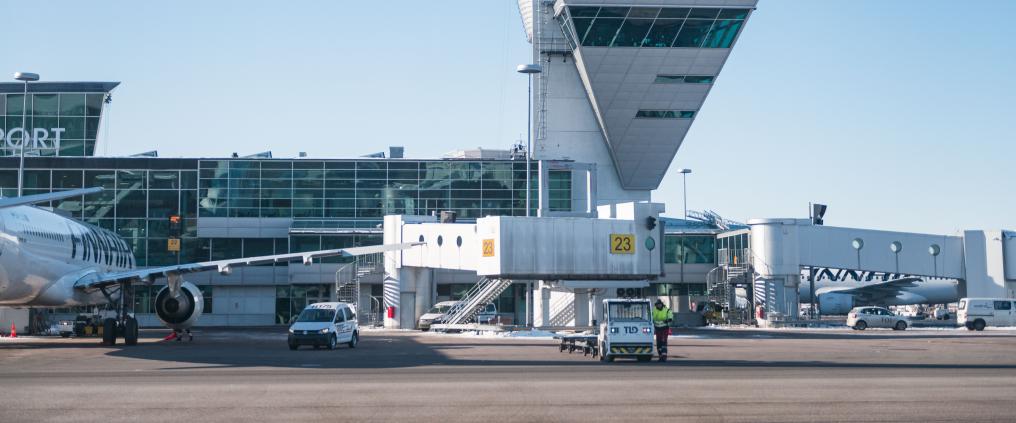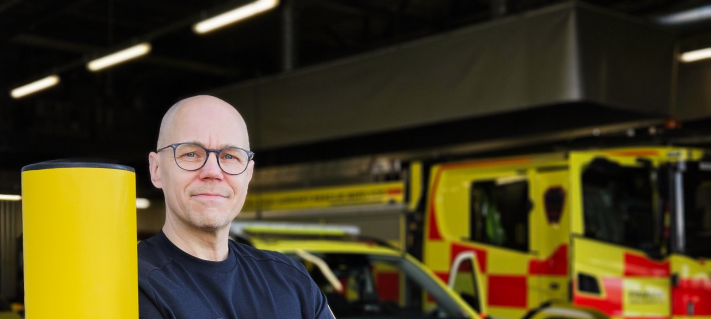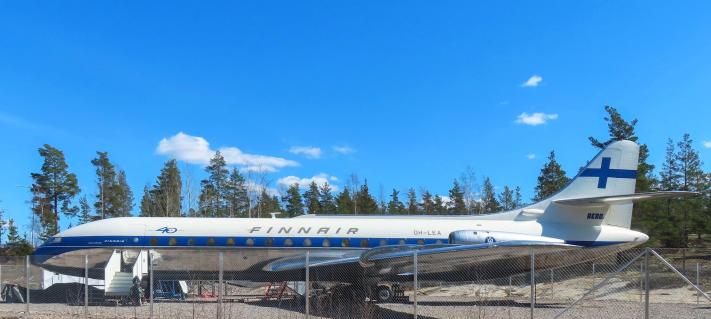“Aircraft parking planning takes into account the airline’s needs as well as the type and size of aircraft, the flight schedule, walking distances and services in the terminal, the type of passenger boarding bridge, the number of transfer passengers and weather conditions, for example,” says Pauli Halme, the Duty Manager of the Helsinki Airport apron team at Finavia.
The goal of Finavia's apron team is to create a parking plan that is safe and serves airlines and passengers the best. There are around 400 flights per day.
"Everything that happens on the apron is taken into account in the planning. Some of the incoming aircraft may need maintenance and service, and on winter days we need to ensure that Finavia’s winter maintenance is able to keep the apron clear."
About 40–50 different aircraft types use Helsinki Airport
"About 40–50 different aircraft types fly to this airport. Of these, just over half fly regular scheduled flights.
Parking stands are allocated to each aircraft well in advance of arrival."
"Helsinki Airport has a total of about 40 aircraft parking stands, but the number is not fixed, as the structures of a few bridge gates allow one wide-body aircraft or the simultaneous parking of two narrow-body aircraft. If needed, we will use outside parking stands on the apron for parking in addition to passenger boarding bridges."
Parking stands are typically most occupied three times a day: in the morning from 6 a.m. to 8 a.m., in the afternoon from 3 p.m. to 5 p.m. and at night from around 11 p.m.
"At night, most of the passenger boarding bridges are occupied by aircraft spending the night at the airport. During the daytime, aircraft parking times are short, even just an hour. In the evening and at night, aircraft are parked for longer periods of time, even for days if the aircraft is being serviced, for example.
Sometimes, aircraft are also towed on the apron. The most common reason for this is that the aircraft is being moved for maintenance."
"Sometimes, departing aircraft are towed to passenger boarding bridges, as our goal is for as many flights as possible to depart from a passenger boarding bridge. It’s a smooth way to depart for both airlines and passengers."
Learn more about Finavia's apron team
Finavia’s Apron Management, or apron team, is responsible for monitoring apron operations and their safety and security at Helsinki Airport, marshaller operations, coordination of deicing operations, aircraft parking planning, aircraft turnaround capacity management, the ground traffic school, Eurocontrol cooperation and maintaining the apron's situational picture in cooperation with air traffic control.
"Among the approximately 40 people, there are marshallers, teachers for the ground traffic school and apron operational work professionals from three different teams. We serve airlines and other stakeholders around the clock, every day of the year," Pauli Halme says.
Further reading
Marshaller's work at Finavia: the airport "sheriff" is responsible for apron safety
What is “target snow removal”? Finavia’s professionals describe what they do on days with exceptional snowfall



